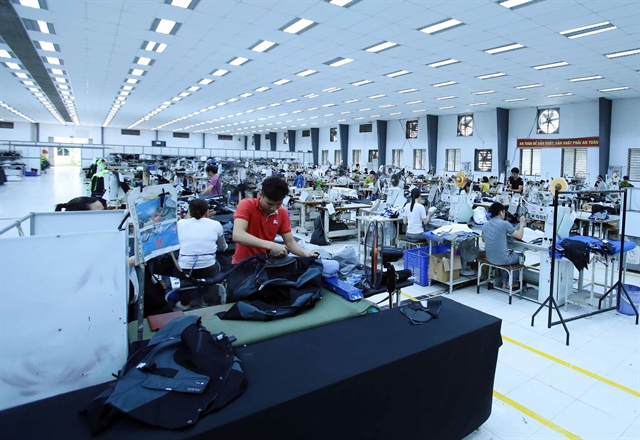 Society
Society


|
| Workers at a garment factory at Phố Nối A Industrial Zone, Hưng Yên Province. Photo for illustration only. — VNA/VNS Photo Phạm Kiên |
HÀ NỘI — The garment industry saw a large number of strikes last year due to low salaries, experts told a conference in Hà Nội on Thursday.
Current wages and solutions towards living wages in Việt Nam’s garment Industry organised by the Centre for Development and Integration (CDI) and Fair Wear Foundation, discussed the problems that workers in companies manufacturing fashion goods face, including low wages and poor living conditions.
Despite the rapid growth of the industry, which accounted for the second highest exports last year, its workers still barely earn enough to cover their basic needs, Lê Đình Quảng of the Việt Nam General Confederation of Labour’s labour relations department said.
A majority are paid below the Asia Floor Wage of US$382 and the Global Living Wage Coalition (Anker) benchmark of $223, he added.
Đinh Hà An, CDI’s labour manager, said though the wages of most garment workers are higher than the national minimum wage of $143, they do not get the living wage that they deserve.
A living wage covering the eight essentials -- nutritious food, decent housing, healthcare, utilities, education, clothing, transportation, and savings -- is still a new concept in Việt Nam.
To make enough for a living, many workers are forced to work overtime, some even doing 110 hours a month.
Kim Thu Hà, CDI’s managing director, explained: “They have only two options: to cut spending or work overtime until exhausted. Low wages therefore lead to low production, labour accidents, discrimination, and violence and pose threats to workers’ health and the well-being of their families.”
These make garment industry the most restive in Việt Nam with a labour turnover rate of 40 per cent a year and accounting for 39 per cent of all strikes last year.
To raise workers’ wages requires a combined effort by all stakeholders: the Government, buyers, suppliers, and workers.
Besides better management, negotiation power of garment companies needs to improve to prevent buyers from setting low prices.
“If companies compete on price, you will soon lose,” Alexander Kohnstamm, director of Fair Wear Foundation, said.
“Focusing on workers’ welfare can create a win-win situation for all.” — VNS